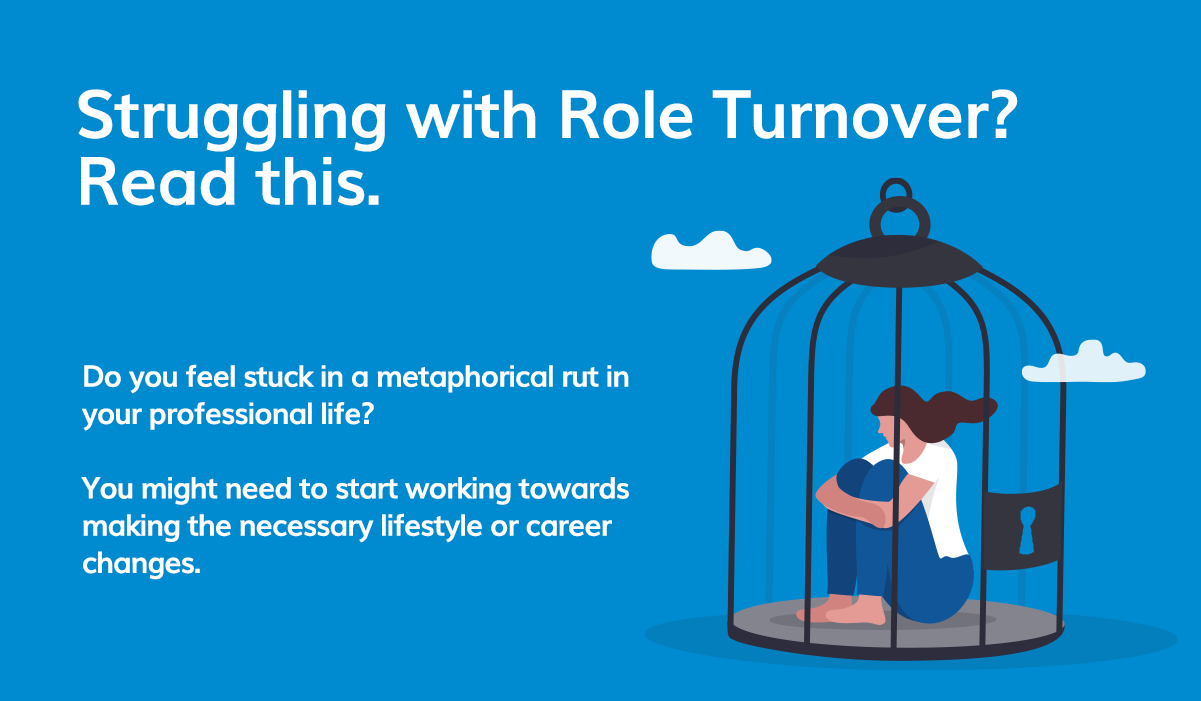Your team might be doing well, exceeding expectations and continuously improving – except for one thing: there is a role you cannot seem to fill. New employees come and go, and you cannot sustain the role. Naturally, role turnover costs the team, and your company, a lot. If you’ve been struggling to retain talent or maintain stability in certain positions, it might be time to reassess and revamp your approach. It may come easy to blame the individuals or write it off as a wrong hire, but if the issue keeps repeating itself, it will benefit you to look inward. The nature of the role might need to change, expectations challenged and managed. Let’s get into it.
Recognising the Signs
Identifying the signs of role turnover struggles is the first step toward finding a solution. Whether it’s a decline in performance, disengagement, a lack of clarity, or frequent personnel changes, paying attention to these indicators can inform your decision to rethink your approach.
Understanding the Root Causes
Dive deeper into the root causes of turnover for specific roles within your organisation. Is it a matter of inadequate support, unclear expectations, or a mismatch between skills and responsibilities? A thorough understanding of these factors is crucial for implementing effective changes. You may have heard that people don’t leave their jobs, they leave bad managers. This may be partially true, but the root cause is not the bad boss per se. Thorough research on company turnover at Facebook, showed that people left because their job wasn’t enjoyable. It wasn’t playing to their strengths and they did not feel like they could grow in their career at that job.
The Importance of Flexibility
In a rapidly evolving business environment, being flexible in your approach is key. What may have worked 5 or 10 years ago, might not go down today. Explore ways to adapt roles, responsibilities, and even team structures to better align with the evolving needs of your organisation. Embracing flexibility can enhance job satisfaction and contribute to increased retention. Pay more attention to how you design a role. When you find talented people, be open to creating roles around them. However, don’t guess. Don’t try to assign tasks to “test” them. Ask them directly. Professionals know what they love and what they’d rather not do, or aren’t as good at. At interview stage, ask them what energises them at work, ask them when they feel immersed in their work and about their passions outside of work. This could arm you, as a manager, with building engaging roles from the get-go. If you cannot offer what they’re after, be honest. That way you don’t waste your time, or theirs! Don’t stop there, however. A few weeks into their job, ask them how they’re doing, don’t just assume everything is going well. Check in to see, if the job is what they expected.
Communication and Feedback
Effective communication is paramount during times of change. Ensure that your team is aware of the reasons behind the adjustments and provide a platform for open feedback. Being transparent will benefit you in the long run. If you have plans for an individual in your team, prepare them and show tangible steps you’re taking towards achieving it. Don’t promise anything, if it might not be possible. Then, be open to being challenged. This, not only fosters a transparent culture, but also allows you to make informed decisions based on valuable insights from your team members.
Implementing Strategic Changes
Once you’ve identified the issues and gathered feedback, it’s time to implement strategic changes. This could involve role redesign, skill development programs, or even exploring new technologies to streamline processes. Tailor your approach to address the specific challenges your team is facing.
Monitoring and Adjusting
Change is an ongoing process, and it’s essential to monitor the impact of your adjustments. Regularly assess the effectiveness of the changes made, gather feedback, and be prepared to make further adjustments as needed. This iterative approach ensures continuous improvement and long-term success.
The take-away…
Role turnover challenges are a reality for many organisations, but they also present an opportunity for growth and improvement. Recognise it as an opportunity for positive change, keep an open mind and be ready to listen and watch as your organisation transforms for the better.
Share this article with a friend or colleague!


